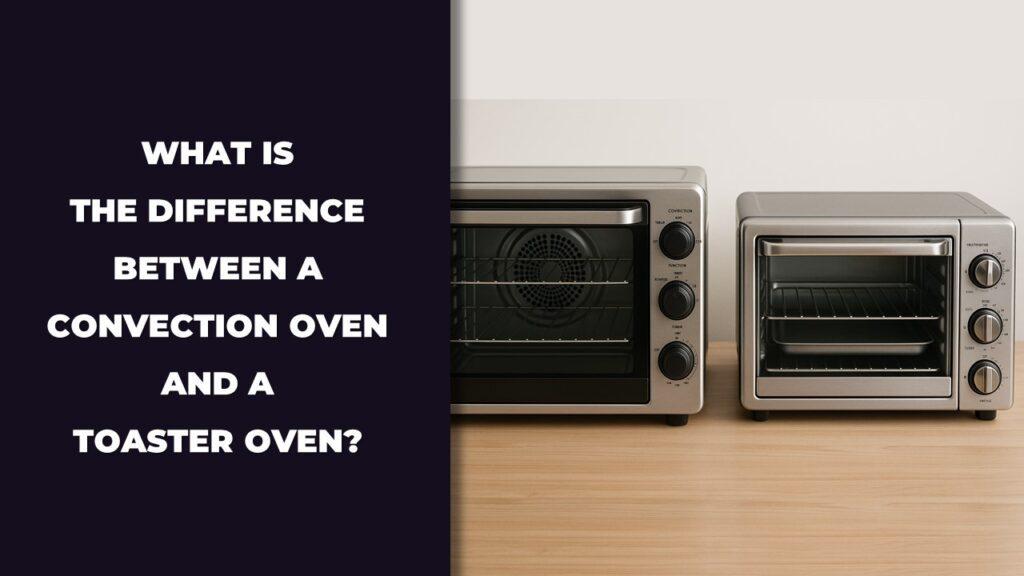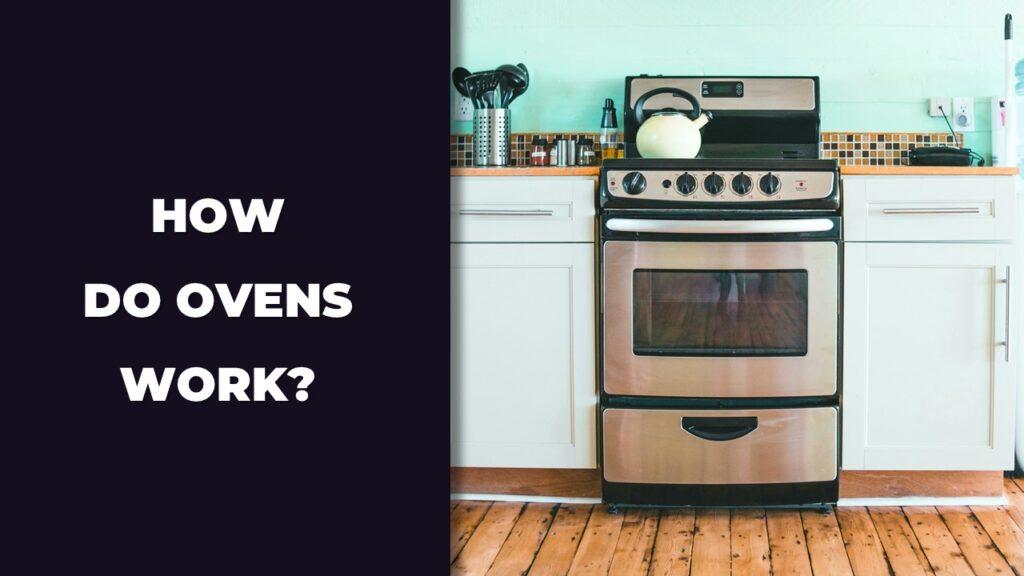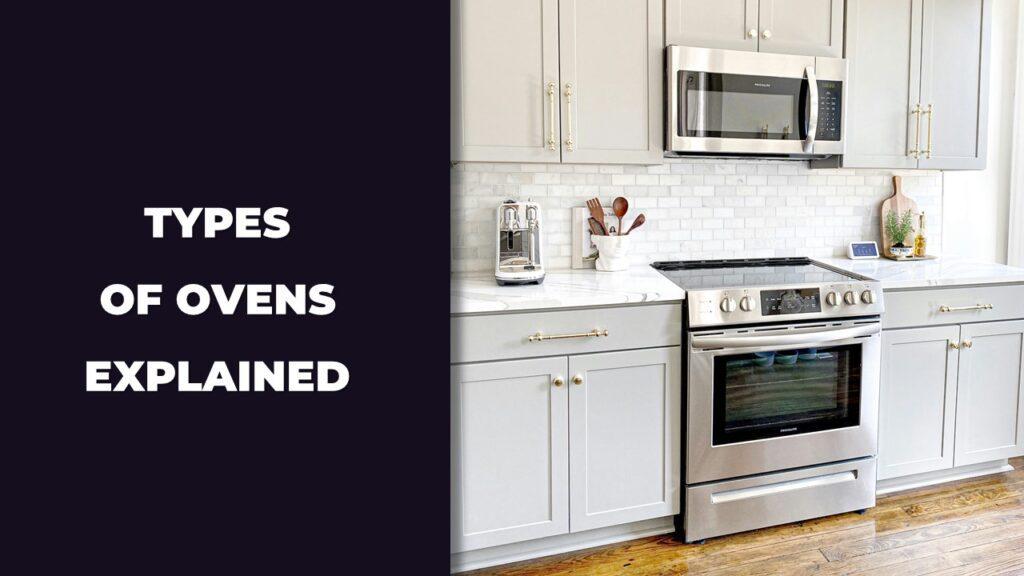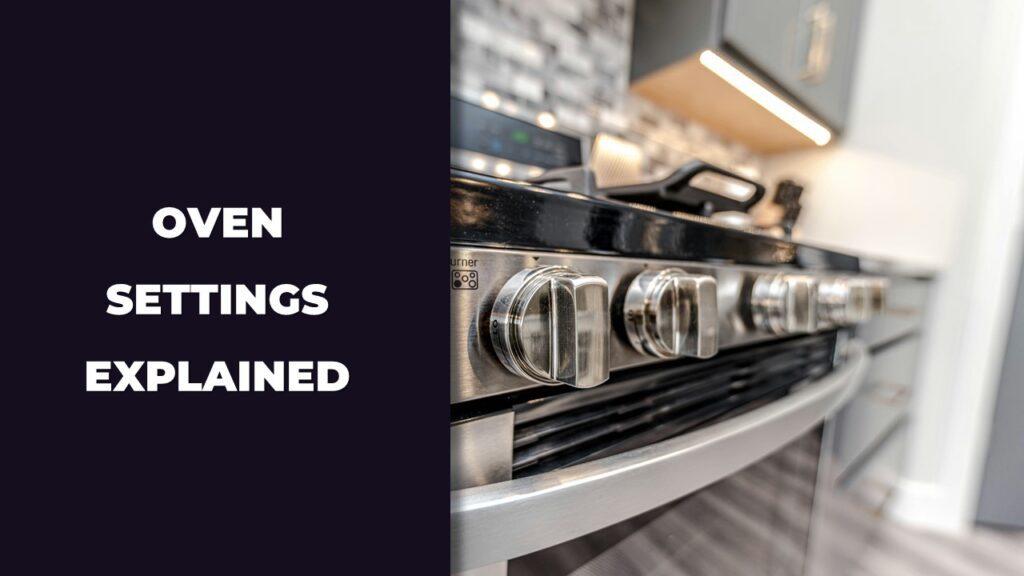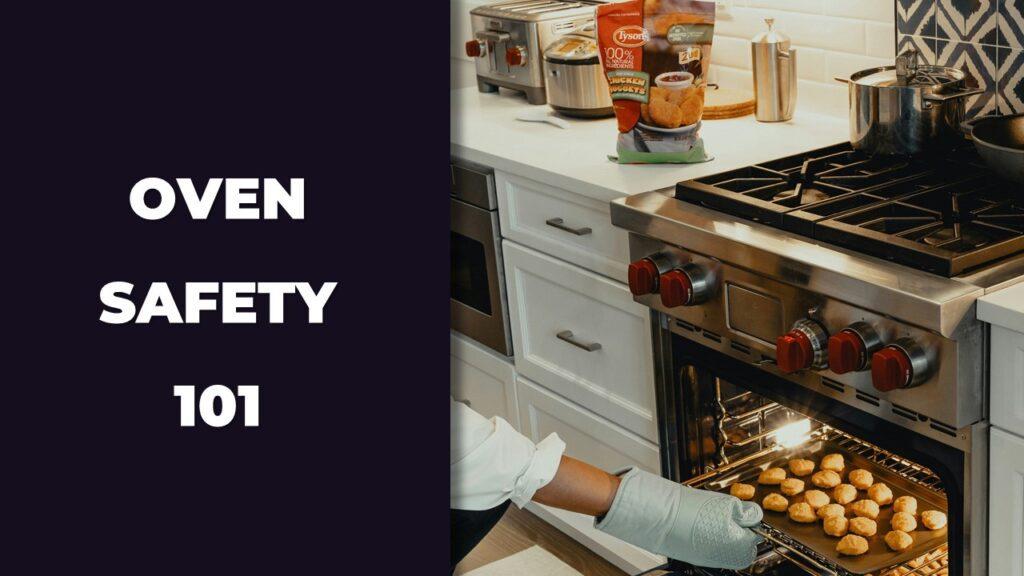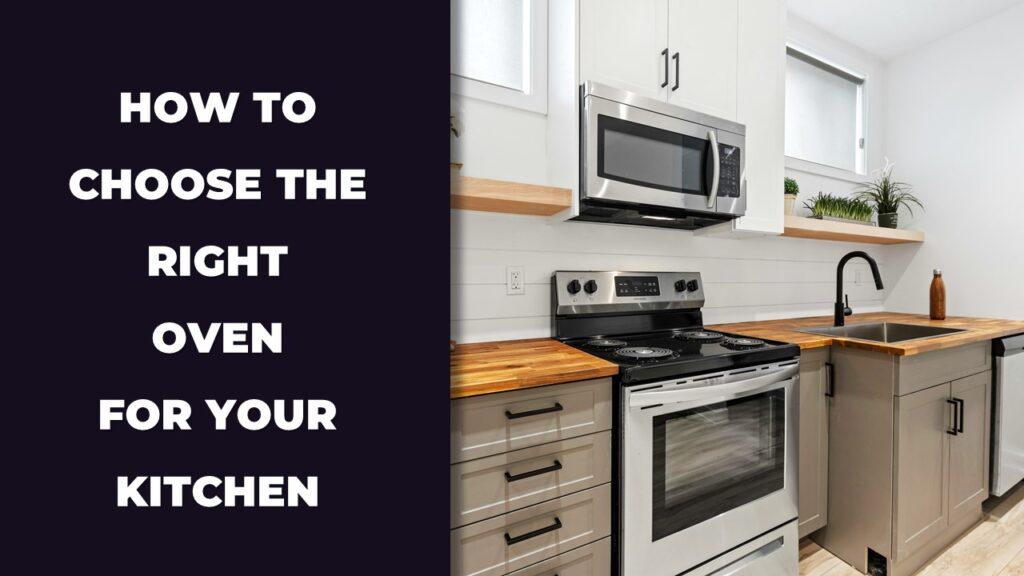
Air fryers and convection ovens both use hot air to cook, but they’re built for different jobs. Air fryer ovens are smaller and cook faster by blasting heat from the top with a strong fan. They’re great for crisping up small batches. Convection ovens are bigger, heat more evenly, and are better for baking or cooking full meals.
In this article, we are going to walk you through how each one works, what they’re best at, and which one might fit better in our kitchen.
What Is an Air Fryer Oven?
An air fryer oven is a compact countertop appliance that uses a strong top heating element and fan to cook food fast with hot air. It crisps the outside while keeping the inside moist, using little to no oil. This makes it ideal for healthier versions of fried foods like fries, nuggets, or wings.
Unlike regular ovens, it heats up quickly and uses focused air circulation in a basket or perforated tray. That fast-moving heat gives frozen foods a crunchy texture without needing deep frying. It’s great when you want crispy results in less time.
But air fryer ovens are small. If you’re cooking for more than two, you’ll likely need to work in batches. Still, if you’re after fast, crispy snacks without the mess of oil, it’s a reliable go-to for quick meals.
What Is a Convection Oven?
A convection oven is a full-size or toaster-style oven that uses a fan to move hot air around your food. This helps it cook evenly, brown better, and often faster than a traditional oven. It’s especially useful for baking, roasting, and cooking larger meals.
The circulating air keeps heat balanced, so you don’t get burned edges or undercooked centers. You can roast a whole chicken or bake cookies on two trays without worrying about cold spots.
Convection ovens take longer to preheat and don’t crisp like an air fryer. But if you want one appliance for big batches, baking, and even air frying with the right accessories, a convection oven covers more ground.
Key Differences Between Air Fryer Oven and Convection Oven
An air fryer oven is smaller and cooks faster using focused, top-down hot air to create crispy textures with little to no oil. A convection oven is larger, distributes heat more evenly using fans, and works better for baking, roasting, and cooking larger meals. While both use hot air circulation, they differ in heating style, cooking results, size, and function.
Heating Technology
Air fryer ovens rely on a single top heating coil paired with a high-speed fan. This setup pushes hot air directly over the food, concentrating the heat from above. The air is fast-moving and targeted, which helps food brown and crisp quickly.
Convection ovens use multiple heating elements, often on both the top and bottom, with a fan on the back or side to move hot air throughout the entire oven cavity. This creates a more balanced and uniform cooking environment, ideal for multi-tray use.
Cooking Speed and Efficiency
Air fryers cook quickly because of their smaller size and intense heat from above. Most models need little to no preheating. They are ideal for reheating frozen foods, cooking small meals, or preparing snacks fast.
Convection ovens take longer to preheat, but once hot, they cook efficiently across larger areas. They are better suited for baking full meals or preparing large batches in one cycle without needing to rotate trays.
Food Texture and Results
Air fryer ovens are known for producing crispy, golden results without deep frying. This is especially helpful for foods like fries, chicken tenders, and frozen snacks where texture matters.
Convection ovens provide more balanced results. They excel at even browning and moisture control, which makes them a better choice for baked goods, roasted vegetables, and meats that need tender insides with a browned surface.
Capacity and Size
Air fryer ovens are compact and fit easily on most countertops. However, their small baskets or trays limit how much food can be cooked at once. This works well for singles or couples but may not suit larger families.
Convection ovens come in a range of sizes, from toaster ovens to full-size built-in units. They offer more space and can handle multiple dishes at once. This makes them ideal for holiday meals, meal prepping, or baking in bulk.
Versatility in Cooking Functions
Air fryer ovens are designed primarily for quick, crispy cooking. Many can also roast or bake, but their limited size makes them less useful for more complex meals. They’re best for snacks, small portions, or quick reheating.
Convection ovens are much more versatile. They can bake, broil, roast, and in some models, even offer an air fry mode. With the right tray or accessory, they can mimic the results of an air fryer while also handling traditional baking and cooking tasks.
Ease of Use and Cleaning
Air fryer ovens are easy to operate, often with presets for common foods. Their trays and baskets are usually dishwasher-safe, but because of their small size, grease buildup happens quickly and they require frequent cleaning.
Convection ovens are easier to keep clean between uses and don’t require cleaning after every meal. Cleaning takes longer when needed, especially in full-size ovens, but accessories like roasting pans or baking mats can help reduce mess and simplify cleanup.
Performance Comparison Table: Air Fryer Oven vs Convection Oven
Air fryer ovens cook faster and give crispier results using top-down heat, while convection ovens are slower but better for even cooking and larger meals. Both use fan-assisted hot air, but they perform differently depending on the type of food and how much you’re cooking.
Here’s a clear comparison of features side by side:
| Feature | Air Fryer Oven | Convection Oven |
| Heating Method | Top coil with built-in fan | Top and bottom coils with rear or side fan |
| Cooking Speed | Faster | Moderate |
| Texture | Extra crispy | Even browning |
| Capacity | Small (1–2 servings) | Large (multiple trays or full meals) |
| Preheating Time | Minimal (1–3 minutes) | 5–10 minutes |
| Energy Usage | Lower per session | Higher per session, efficient in bulk |
| Best For | Frozen foods, quick snacks | Baking, roasting, family meals |
| Maintenance | Needs cleaning after each use | Less frequent, deeper cleaning needed |
This table helps you quickly decide based on your cooking habits, batch size, and what kind of food texture you prefer.
Which One Is More Energy Efficient: Air Fryer Oven or Convection Oven?
Air fryer ovens are more energy efficient for small meals, while convection ovens become more efficient when cooking in bulk. It comes down to the size of your portions and how often you cook.
Air fryers typically run at 1400 to 1800 watts and cook food in shorter time periods. For example, a 30-minute cooking session using a 1500-watt air fryer would use:
Energy (kWh) = (Watts × Time in hours) ÷ 1000
= (1500 × 0.5) ÷ 1000 = 0.75 kWh
If electricity costs $0.15 per kWh, then:
0.75 × $0.15 = $0.11 per use
A convection oven might use 2500 watts and cook the same food in 40 minutes:
(2500 × 0.67) ÷ 1000 = 1.675 kWh
1.675 × $0.15 = $0.25 per use
If you’re only cooking a small batch, an air fryer saves both time and money. But if you fill a convection oven with two or more trays of food, the energy per serving drops, making it more efficient for families or meal prepping.
Bottom line: for quick meals or single servings, the air fryer wins on efficiency. For big-batch cooking or multiple dishes, the convection oven is more practical in the long run.
Can a Convection Oven Replace an Air Fryer?
Yes, a convection oven can replace an air fryer if you use the right accessories and adjust your cooking method. While air fryers are more compact and cook faster, a convection oven with good airflow and the proper tray setup can give you similar crisp results.
To get the most out of a convection oven as an air fryer, keep these tips in mind:
- Use a perforated or mesh tray to improve airflow under the food
- Avoid deep baking dishes or pans that block circulation
- Space the food out in a single layer to prevent sogginess
- Increase the temperature slightly (about 25°F higher than air fryer recipes call for)
- Flip or shake halfway through to expose all sides evenly
- Preheat the oven fully to get hot air moving from the start
- Expect slightly longer cook times than in an air fryer, especially for frozen or breaded items
While it won’t match an air fryer’s speed or crisping power exactly, a convection oven comes close enough, especially if you’re trying to avoid cluttering your counter with another appliance.
Pros and Cons of Air Fryer vs Convection Oven
Air fryer ovens are great for fast, crispy results in small batches, while convection ovens offer more space and versatility for larger or more complex cooking tasks. The best choice depends on your kitchen habits, portion size, and cooking goals.
Air Fryer Oven
Pros
- Cooks food quickly, often without needing preheating
- Delivers extra crispy texture with minimal oil
- Compact and fits well in small kitchens
- Simple to use with quick presets
- Energy-efficient for small meals
Cons
- Limited capacity, often suitable for one or two servings
- Can require multiple batches for family-sized meals
- Needs frequent cleaning due to grease and crumbs
- Not ideal for baked goods or large roasts
- Can dry out food if not timed properly
Convection Oven
Pros
- Large cooking space for full meals or multiple trays
- Even heat distribution, great for baking and roasting
- Versatile functions—can bake, broil, roast, and air fry in some models
- Better for meal prep or batch cooking
- Doesn’t need cleaning after every use
Cons
- Slower cooking and longer preheating time
- Not as crisp-focused as an air fryer
- Bulkier and takes up more kitchen space
- May require rotating trays for best results
- Uses more energy per session if cooking small portions
Who Should Buy an Air Fryer Oven vs a Convection Oven?
Buy an air fryer oven if you want fast, crispy meals in small portions with minimal oil; choose a convection oven if you need to cook larger meals, bake regularly, or want more versatility. Your cooking habits, kitchen space, and portion sizes will help you decide which one fits your needs better.
Air Fryer Oven Is Best For
- Singles or couples who mostly cook for one or two people
- Anyone who frequently cooks frozen snacks, reheats leftovers, or wants crispy food without deep frying
- Busy households needing quick meals with short preheat and cook times
- People with limited kitchen space or living in dorms, apartments, or RVs
- Health-conscious eaters looking to cook with less oil and fewer calories
A Convection Oven Is Best For
- Families or meal preppers cooking larger portions or multiple trays
- Home bakers and cooks who need even, consistent heat for cakes, roasts, and casseroles
- Kitchens that have room for a built-in or countertop full-size oven
- Those who want an all-in-one appliance with flexible cooking modes
- People who often bake, broil, or roast instead of just crisping or frying
Final Verdict
If you’re looking for fast cooking, crispy textures, and a simple countertop solution, an air fryer oven is hard to beat. It’s best for snacks, frozen foods, and quick meals when you’re short on time or cooking in small batches.
For those who bake often, cook large family meals, or want one appliance that can do it all, a convection oven is the smarter long-term choice. It handles everything from cookies to casseroles and gives you more flexibility with temperature control and capacity.
So, which is better, an air fryer oven or a convection oven? It depends on what you cook, how much you cook, and how much space you have. Both can work great in the right kitchen. It’s just about choosing the one that matches your everyday routine.
Related FAQs
Can I Use My Convection Oven to Air Fry?
Yes, you can use a convection oven to air fry by increasing the temperature slightly and using a perforated tray or mesh basket to improve airflow. Keep food in a single layer and flip it halfway through for better crisping.
Which Is Healthier: Air Fryer or Convection Oven?
Both options are healthier than deep frying because they require little to no oil. However, air fryer ovens are designed to create crisp textures with minimal fat, making them a popular choice for low-oil cooking.
Are Air Fryers Just Small Convection Ovens?
Yes, air fryers are technically compact convection ovens, but they use a stronger, top-mounted fan and more focused heat to cook food faster and crispier. Their design makes them better for small, quick meals.
Do Air Fryer Ovens Consume Less Electricity?
Yes, air fryer ovens usually use less electricity per session due to their smaller size and shorter cooking times. For bigger meals, though, convection ovens may be more energy-efficient when cooking everything in one batch.
Can You Bake in an Air Fryer Oven?
Yes, many air fryer ovens can bake small items like muffins, cookies, or mini casseroles. Just make sure to use the right bake setting if available and avoid overfilling the tray, as space is limited.
Is Food Crispier in an Air Fryer or Convection Oven?
Food generally comes out crispier in an air fryer because the heat is more intense and concentrated. Convection ovens can get close, but they’re better known for even cooking rather than extra crunch.
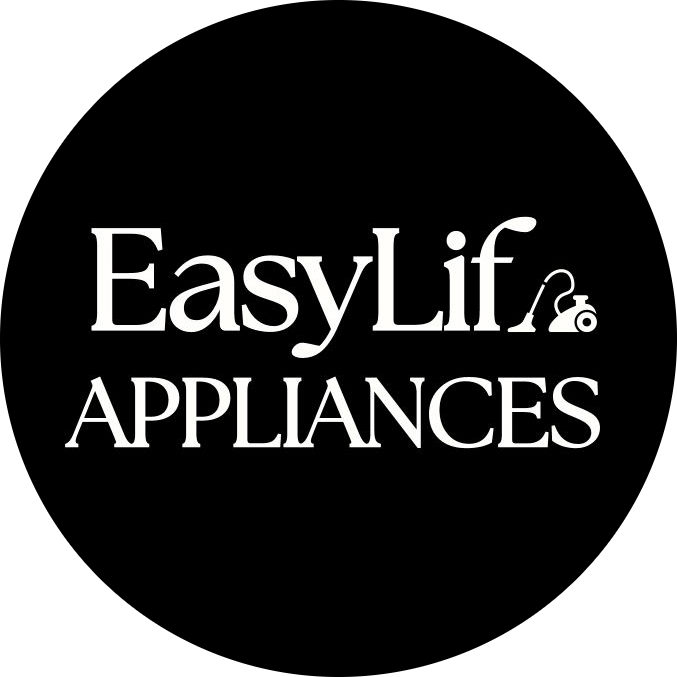
At our core, we’re a group of passionate households and gardening tools and appliances users and enthusiasts. We dive deep into the world of tech, especially when it’s about your household or gardening electric items. We try to provide as much value to the readers with our information and how to blog articles as possible. For affiliate articles our honest and transparent reviews of essential tech products are rooted in real-world experience. We take great satisfaction in offering unbiased evaluations, ensuring that you can make informed decisions when investing in your desired techs.

